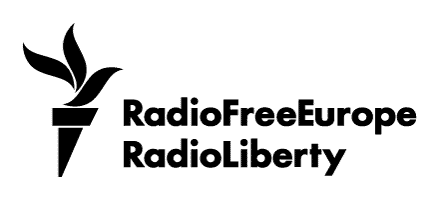The Israel-Iran conflict carries with it many unknowns: whether Israeli air strikes on Iranian nuclear facilities might cause the release of radiological materials; whether Israel’s offensive might morph into a campaign of regime change; and whether the United States might become directly involved in a war with Iran.
But media speculation about one possible scenario has been particularly intense.
Key parts of Iran’s nuclear complex are buried underground, and news reports have focused on one particularly hard target, the Fordow enrichment facility in Qom province, about 150 kilometers south of Tehran.
The Fordow plant is buried deep inside a mountain, in a tunnel complex constructed for Iran’s paramilitary Islamic Revolutionary Guards Corps (IRGC). Its existence was disclosed in a joint statement by US President Barack Obama, French President Nicholas Sarkozy, and UK Prime Minister Gordon Brown in 2009.
“Iran has a right to peaceful nuclear power that meets the energy needs of its people,” Obama said. “But the size and configuration of this facility is inconsistent with a peaceful program.”
Tehran subsequently acknowledged the existence of the facility, which eventually would fall under the Joint Comprehensive Plan of Action (JCPOA) that restricted Iran’s nuclear program.
US President Donald Trump withdrew from the deal during his first term as part of a campaign of “maximum pressure” against Tehran; Iran responded by stepping up its nuclear program.
Fast forward to the present day: According to the International Atomic Energy Agency (IAEA), Fordow is producing 60 percent enriched uranium, a major step up the ladder toward weapons-grade material suitable for a bomb.
“The status of Fordow at present or following any further strikes will be essential for Iran’s nuclear future, as it is believed to be the facility that could increase enrichment from 60 to 90 percent for weapons-grade uranium,” wrote Heather Williams, the director of the Project on Nuclear Issues and a senior fellow in the Defense and Security Department at the Washington-based Center for Strategic and International Studies in a commentary that followed the start of Israel’s strikes on Iran.
“An additional concern is that Fordow could be one of the sites where Iran has been stockpiling 60 percent enriched uranium or where the stockpile could be transferred,” Williams said.
What Is A 'Bunker Buster,' And Would It Work Against Fordow?
The IAEA now assesses that an Israeli strike managed to hit an underground enrichment facility at Natanz. It is not clear what munitions were employed in that strike, but the Israeli military does possess bombs that are capable of penetrating underground before detonating.
A New York Times open-source analysis of video of the aircraft used in the attack that killed Hezbollah leader Hassan Nasrallah last year concluded they were carrying US-made 900-kilogram bombs fitted with Joint Direct Attack Munition guidance kits that steer the bomb toward a target.
Those bombs -- colloquially known as “bunker busters” -- leveled several multi-story apartment buildings. But the Fordow facility presents a much more challenging target because the facility is deep underground.
That’s led to a flurry of speculative news reports centering on a weapons system that is not available to the Israelis: the GBU-57 A/B Massive Ordnance Penetrator (MOP), a bomb in the US military arsenal.
According to a 2007 article published by the Defense Threat Reduction Agency, the US Defense Department agency that funded the development of the MOP, the 13,600-kilogram penetrating bomb is “designed to defeat hard and deeply buried targets such as bunker and tunnel facilities.”
A report from the Defense Department's Office of the Director, Operational Test and Evaluation, says the B-2 Spirit stealth bomber is the only aircraft that can employ the MOP.
Whether the MOP could be employed against Fordow -- and whether it would be capable of rendering the facility inoperative -- remains hypothetical.
Trump’s rhetoric on Iran has sharpened in recent days, but it is not yet clear if the US would intervene directly in a bombing campaign against Iran and send the B-2 against Fordow.
And discussions about the technical wizardry leave out a key part of any discussion about weaponry, namely, their raw destructive power.
The Israeli military, for instance, has already come under international criticism for its use of 900-kilogram bombs and other munitions in Gaza.
Human-rights advocates say the use of such heavy weaponry in densely populated areas is indiscriminate and disproportionate. The UN Human Rights Office last year published a report on six strikes by the Israel Defense Forces in Gaza that caused more than 200 civilian deaths.
Fordow is not in a densely populated area, and comparisons between conflicts are never precise. But some observers have also questioned whether a successful attack on the facility would necessarily set back Iran’s nuclear program.
“The deeply buried enrichment plant at Fordow was not hit in the first night’s attack,” wrote Mark Fitzpatrick of the International Institute for Strategic Studies in an online analysis.
"However, it could be targeted in the continuing operation that Netanyahu forecast in a televised address the same morning. It is unknown whether Israel was able to destroy the 604-kilogram uranium enriched to 60 percent U-235 content that Iran has produced to date.
This amount is enough for 10 or more nuclear weapons if further enriched to the approximate 90 percent considered to be weapons-grade. The stockpile is transportable and would have been the first thing to be hidden when Israel’s bombing plans became clear.”
Put otherwise, the bunker-busting may get headlines, but the high-profile strikes may not deliver the expected results.


















